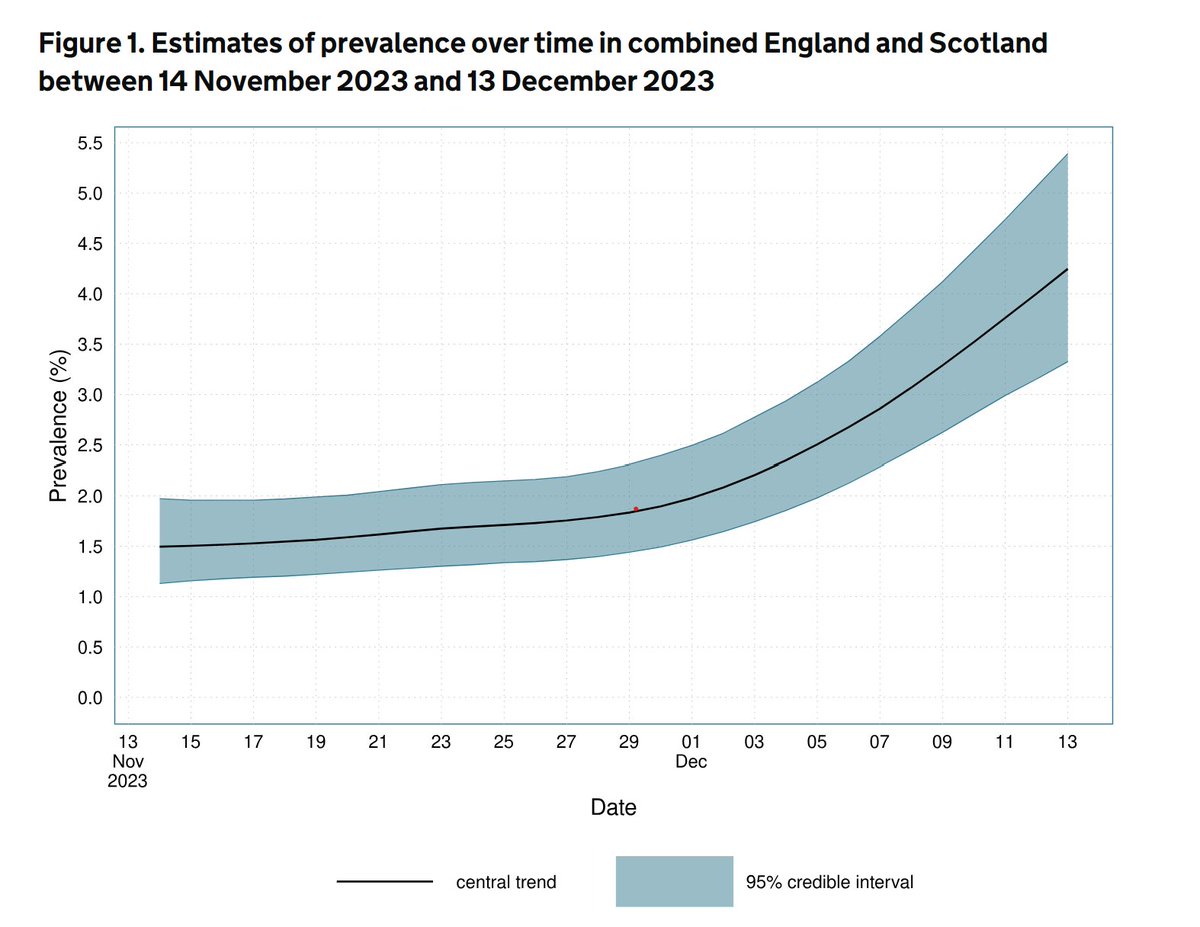Thu🏴booster/3rd primary update:
695k reported today, up just 11%, but after last week's 84% increase it still means it's more than double the figure of two weeks ago.
Total is now 26.6m, being 71% of those eligible by the year end.
1/
695k reported today, up just 11%, but after last week's 84% increase it still means it's more than double the figure of two weeks ago.
Total is now 26.6m, being 71% of those eligible by the year end.
1/

The low % increase today means a flattening of the previous steep curve over the last 10 days, which isn't at all surprising.
Whilst we haven't quite hit the target to get 90% done, in practice I doubt take-up will be that high, particularly amongst younger adults.
2/
Whilst we haven't quite hit the target to get 90% done, in practice I doubt take-up will be that high, particularly amongst younger adults.
2/

Next the age-banded analysis, with the dark purple showing progress since the accelerated campaign started. Pale blue bars now sum to just over 10.5m, or just under 7m if 90% come forward in aggregate.
3/
3/

Here are current take-up proportions. We've done 87% of the Over 50s and 92% over aged 65. A bit more progress further down over the rest of the year would be very welcome though, although the large number of positive tests will mean some can't come forward unfortunately.
4/
4/

Next progress over the last month.
Although most of the activity is lower down, I was pleased to see 70-79 nudge up to 94% today and 80+ is still going up by around 0.3% a day so should get to 90% in due course.
50-59 hit 80% today too with a remarkably linear line.
5/
Although most of the activity is lower down, I was pleased to see 70-79 nudge up to 94% today and 80+ is still going up by around 0.3% a day so should get to 90% in due course.
50-59 hit 80% today too with a remarkably linear line.
5/

So in summary, some great protection now for the oldest most vulnerable age groups, thanks to a herculean effort by all those involved. Thanks as ever to all involved from the top down to all those involved in the vax centres up and down the country.
6/6
6/6
• • •
Missing some Tweet in this thread? You can try to
force a refresh












